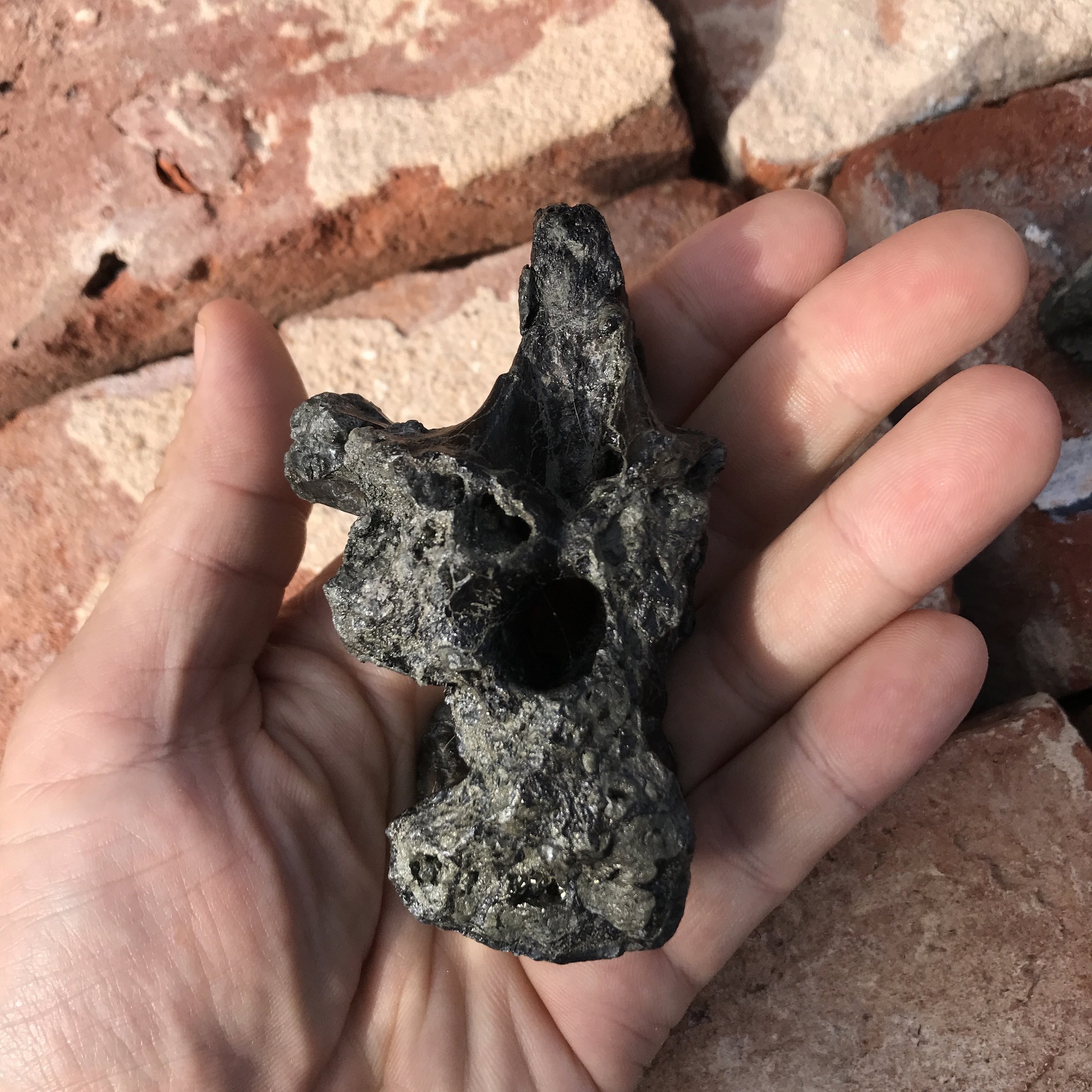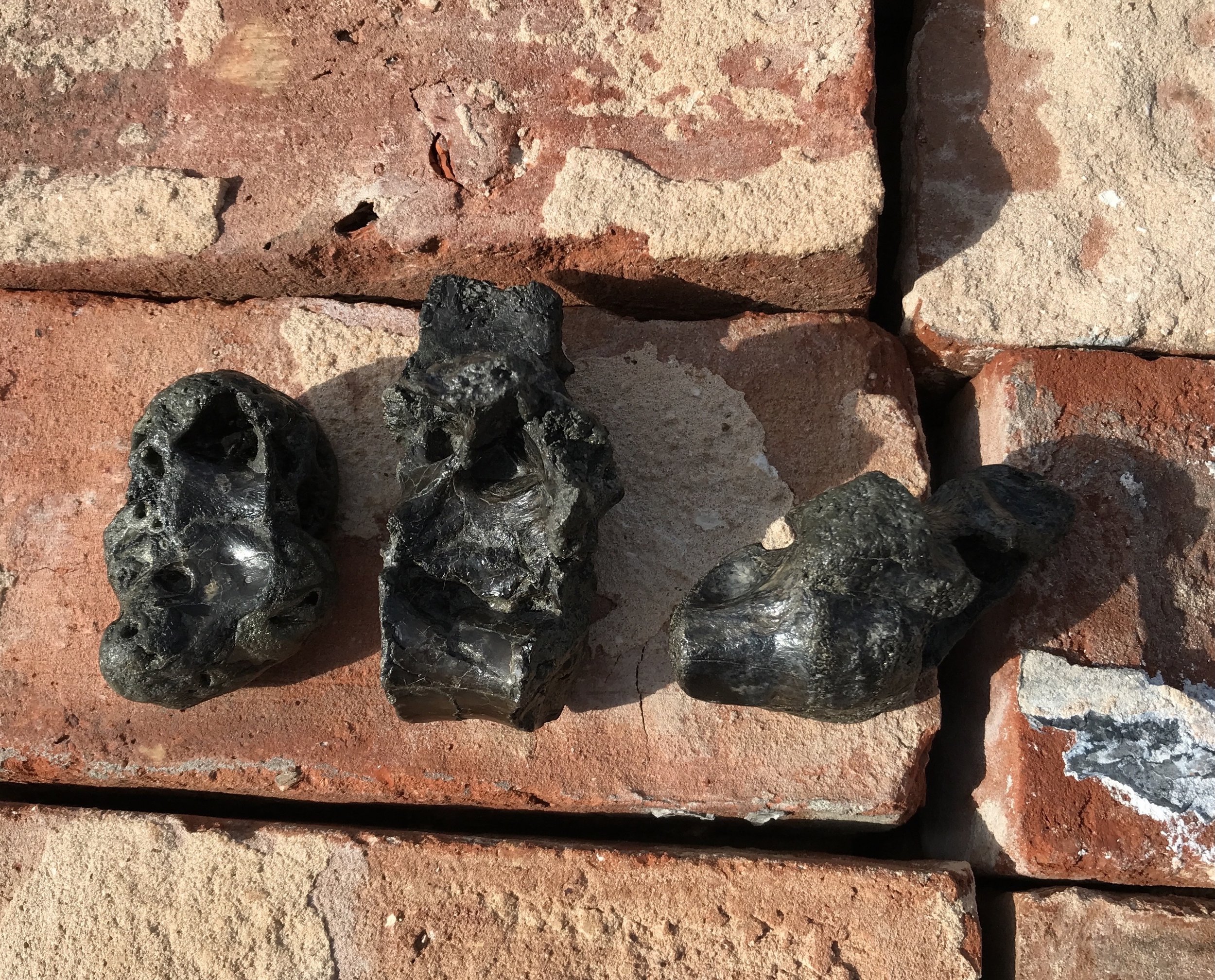The Vicious Vectiraptor
A new raptor from the Early Cretaceous of the Isle of Wight, the importance of incomplete specimens in paleontology
Vectiraptor greeni, by Gabriel Ugueto.
125 MILLION YEARS AGO, dinosaurs roamed England. There were herds of spike-thumbed iguanodonts, giant long-necked brachiosaurs, and various deadly predators- the allosaur Neovenator, the early tyrannosaur Eotyrannus, and the fish-eating Baryonyx. In contrast to the badlands of Montana or the deserts of Mongolia, England is a lush country, with few exposures where you can find fossils. As a result, this picture has been slowly and painstakingly pieced together from quarries and eroding sea cliffs, bit by bit, for 200 years. Many of these animals are only known by a few bones, a single bone, or even a partial bone. Now, to this menagerie we can add another animal- a large, wolf-sized predator, the raptor Vectiraptor greeni.
Compton Bay, Isle of Wight. Early Cretaceous Wessex Formation outcrops here, and it was along this stretch of coast that the fossils of Vectiraptor were exposed by the sea.
This summer I was down at the Isle of Wight with colleagues arranging to have some fossils prepared by local preparator and amateur paleontologist, Mick Green. Mick was an avid fossil hunter for many years, walking the beaches of the Isle almost every day until he was forced to stop by an injury. Since then, he’s focused on preparing his collection. Over a coffee or two, we got to talking dinosaurs and admiring the collection, when he brought out some little vertebrae he’d found down on the beach back in 2004, and sat them on the table.
I struggled to make sense of them. They were beat up, but where they’d been broken apart you could see little walls of bone dividing the interior of the bone into hollow chambers. In life, these cavities would have been filled with air, like the bones of a bird. You see something remarkably similar in certain large, long-necked sauropods, but the bone was too small for a sauropod. That suggested theropod- a small, birdlike dinosaur— but which one?
Then I noticed the way the facets for the ribs stuck out to the side. That’s a peculiarity among dinosaurs— but I’d seen it before. Studying bones of animals like Deinonychus, Utahraptor, Velociraptor— it was a telltale hint that we were dealing with a raptor. And a large one, around 3 meters long and weighing as much a human.
Not much of the animal had survived. There were a couple vertebrae, one in decent condition. The other other was rounded from rolling around in the surf. A well-worn chunk of sacrum. Not a lot. It’s not the kind of stuff that you dream of discovering as a kid.
It reminds me, in fact, of my first experience in the field. The summer after I finished high school, I went to Caspar, Wyoming for a conference, and there I saw the Jurassic outcrops of the Morrison Formation. I’d never had an opportunity to hunt dinosaurs before- I’d grown up in rural Alaska, where the only local fossils came from a small stretch of Miocene rocks that produced mussels.
My first experience hunting dinosaurs was one of the biggest disappointments of my life. I’d had visions of complete, articulated skeletons weathering out fo the ground, the sort of thing you see mounted for display in the natural history museum in New York. Such finds do exist, but they’re vanishingly rare (in fact, this has only happened to me once. It was in the Gobi Desert, and it was not a dinosaur, but a lizard. And in fact, it was my colleague who spotted it, not me).
What happened was instead someone picked up a black and battered fossil. The sad remains of a sauropod tail vertebra. Not exactly impressive. Well, I thought, it can only get better from here.
“That’s one of the best bones I’ve ever seen in the field!” one of the paleontologists gushed.
So no, apparently it did not get a lot better. It was pretty clear that there was a considerable gap between my youthful fantasy of paleontology (beautiful dinosaur skeletons everywhere) and the reality (weathered scraps, and lots of work even to find those). That poor, sad little dinosaur tail vertebra sort of broke me. It was just so deeply disheartening. At that moment I realized that while I had no idea what to do with my life, it was pretty clear I wasn’t cut out for a career in paleontology.
And yet, twenty years later, I found myself enthralled by a few sad-looking, beat-up pieces of vertebrae, just utterly rapt. A new dinosaur.
The Fragments of History
I’ve come to appreciate these scraps, for several reasons.
First, there just aren’t many good skeletons.
There are hundreds of vertebrate paleontologists and perhaps a few dozen T. rex skeletons, not enough to go around. So if you want to work on a good skeleton of a new species, you generally need to get in line behind a lot of other people.
Vertebrate paleontologists tend to be possessive and territorial, especially with interesting things like dinosaurs, or fossil snakes, or hominins, because these fossils are just really rare. The way paleontologists act with important specimens sort of reminds me of the seagulls in Finding Nemo, who converge around poor little Nemo, each of them hungry, and with the same thought running over and over through their little heads.
“Mine? Mine? Mine?”
Interesting, important, beautiful fossils tend to attract attention in the same way; that means lots of competition for them.
Whereas with the scraps, there’s less people fighting over them, often they’re neglected entirely. As a student, I realized this early. Many of the beautiful fossils were being worked on already, so it was hard to find much to do if you were restricting yourself to the handful of really lovely fossils. As a result my first paper was on a single bone (not even complete) of a little Cretaceous bird, and lots of others have been on less than spectacular remains.
Second, not only is there far less competition when you study the scraps, there are far more fossils. That means far more data. For every beautiful, articulated T. rex skeleton in existence there must be 1,000 more scrappy T. rex specimens, isolated bones, and isolated teeth.
The vast majority of the fossil record represents this stuff; the incomplete skeletons, isolated fossils and scraps. It follows that if you ignore this stuff in favor of the “good stuff”, you miss >99.9% of all the vertebrate fossils out there, perhaps far more than that.
Most of them won’t be all that interesting, of course. But some of these fossils will be. They’ll be new species, first occurrences and last occurrences of lineages, range extensions. Incomplete fossils are obviously more challenging to work with, but if you’re willing to work with them, and take the time to understand what they’re telling you, then you have vastly more data to work with.
A beautiful skeleton can provide a picture of a single species, at one point in time, in great detail. How it lived, and died. But if we’re interested in larger patterns in evolution- when lineages appeared and diversify, when and how they went extinct, biogeographic distributions- it’s these little scraps that turn out to be tremendously important.
It’s said quantity has a quality all its own. Large quantities of data let us fill in patterns that otherwise aren’t obvious. That’s why many paleontologists interested in evolution and extinction work on common things- fossil clams, or better yet, fossil pollen, and microscopic plankton, where you can get vast numbers of specimens in a few grams of rock. Or in my case, scrappy dinosaur bones.
Over the past two centuries, we’ve slowly pieced together a picture of the Cretaceous dinosaurs from the Isle of Wight, and incomplete specimens have been critical. Of the theropods many are known from scraps.
Yaverlandia, known from a pair of frontal bones.
Aristosuchus, known from a few bones from the hips.
Ornithodesmus, known from a series of sacral vertebrae.
Calamospondylus, a neck vertebra.
Theceocoelurus, just half a neck vertebra.
About half the theropod dinosaur fauna is known from these isolated remains.
But the big thing is, I’d vastly prefer to find something scrappy and new-like our raptor- than something complete, and not new. Which is why those vertebrae- seemingly something new- held my attention in the way that, say, a complete T. rex cannot. Yes, a complete T. rex is beautiful- but it doesn’t really tell us much we didn’t already know already. It’s just another T. rex, an animal we’ve known in great detail for a century.
Whereas these battered little bones— they hinted at an animal we’d never seen before.
References
Longrich, N.R., Martill, D.M., Jacobs, M.L., 2021. A new dromaeosaurid dinosaur from the Wessex Formation (Lower Cretaceous, Barremian) of the Isle of Wight, and implications for European palaeobiogeography. https://doi.org/10.1016/j.cretres.2021.105123










